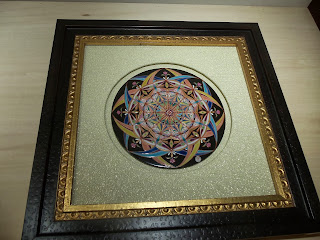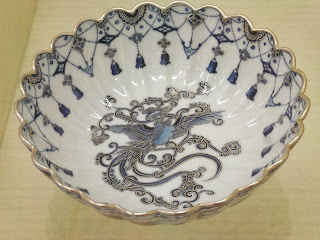Simply: a shop where everything costs Y100 – well,
actually it’s Y105, the price in the name doesn’t include the 5% VAT, but it
does sound more catchy this way.
It’s neither a new thing nor one limited to Japan
only. There are Poundlands in the UK, €1 shops in Germany (and other countries
in the Euro zone, I guess), “all costs X zloty” in Poland – hyaku-en shoppu are
just the Japanese equivalent. And yet I get an impression that you can always
tell something about the country, the nation and its habits by exploring such
shops. To me Poundlands in the UK seem a lot about food – yeah, you can get
pretty much anything there, almost like in a supermarket, simply cheaper for
all sorts of reasons, but the food section does seem a little bigger to me. The
Polish “all costs X zloty” (it used to be 4 or 5, but got a bit more expensive
even before I moved to the UK, and I’ve no idea how much is it now) always
looked to be like the cheap kitsch dens, serving mainly as places where you
could get a cheap, somewhat crappy gift – or something for yourself if you
happen to like this sort of cheap stuff, cheap both in price and its look. So
how does it look like in Japan?
It’s a bit hard to tell at first. There’s plenty of
hyaku-en shoppu in all sizes in Japan, and among them the biggest is the chain
shop Daiso. You can probably literally get anything at Daiso – so far I’ve not
managed to leave it without buying at least five things. This way, other than
things I actually needed, like baking paper or notebooks, I am richer by a
small baking tray (just big enough for my toaster oven), a small hand mixer, an
apron or cute face towel.
Of course, Daiso’s
offer doesn’t stop there. Everything from the kitchen, household decorations or
DIY stuff, through to stationery or make-up, all the way to food and seasonal
things (they just changed the Halloween items to Christmas ones, even though
Christmas isn’t a big holiday in Japan). Maybe it’s different in other Daiso
stores, but in the one that I am frequenting there isn’t anything that’d stand
out in any particular way, maybe except for the little fact that even the
things you’d least expect can be cute and kawaii, but that’s probably a
reflection of a general tendency of the Japanese who do like all that is
kawaii.
The longer I think about it, the more I think that in
Japan the need for hyaku-en shoppu comes from the fact that it still is quite
an expensive place to live in – and after all an everyday man has to eat out of
something, write their homework somewhere or clean their ear with something
too, so why not save a little while getting all this? They’re spending enough
on a flat or bills as it is already.
At the same time tere is something in hyaku-en shoppu
of the everyday convenience in that the Japanese are so used to. Everything is
benri (便利), meaning convenient: reliable public transport and
the trains that you can tune your watches according to; vending machines
everywhere which even tell you where you are if you can only read Japanese;
bags for umbrellas put by the entrance to libraries/restaurants/shopping
centres/schools/anywhere on rainy days so that the water won’t drip on the
floor, making it dirty and/or slippery, one could probably go on for quite a
while. And hyaku-en shoppu seem to reflect that, after all not only they’re
cheap, but you can get so many things from one place only. In the UK it’s not uncommon
to buy a pot or some plates in a supermarket, if you need to – but I’ve not
seen that here (there is a chance that my local Aeon is simply too small for
something like that, but I do doubt that). Whereas you can go to Daiso and
leave with the pot (a small one, yes, it’s only Y105 after all), a washing
liquid to clean the pot with and something to put in the pot to eat later on.
Benri!





























































































































